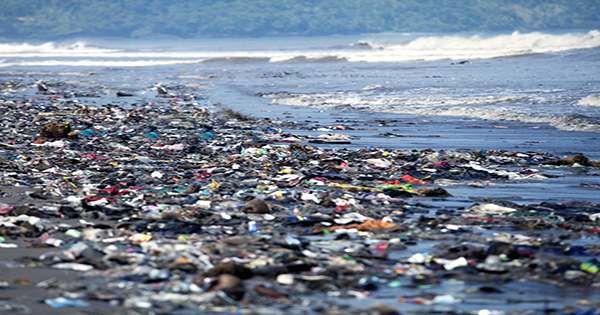Scientists at the University of Exeter, the Galapagos Conservation Trust (GCT) and the Galapagos Science Center have made a fatal discovery on the island of San Cristobal where Charles Darwin first landed in the Galapagos. In a new study published in Total Environmental Science, the authors described macro and microplastics discoveries in all marine habitats on the island, including a beach that contains the extremely rare “Godzilla” marine Iguana.
Plastics have also been found in other habitats such as rocky lava shores on the island and mangroves. Dr Ceri Lewis, of Exeter’s Global Systems Institute, said in a statement, “The original image of the Galapagos may give the impression that the islands are somehow protected from plastic pollution, but our study clearly shows that this did not happen.”
“There are less than 500 Godzilla marine Iguanas here and they are living alongside this high level of plastic pollution.” Moreover, investigations proved that only 2% of the “macroplastic” (pieces of plastic larger than 5 millimeters) came from the surrounding islands. The authors suggest that most people were brought to the location by sea currents from elsewhere. “Our research highlights how far plastic pollution travels and how it contaminates every part of the marine ecosystem,” said lead author of the study, Dr. Jane Jones says. Scientists discovered varying amounts of microplastics inside various marine invertebrates such as barnacles and urchins, which could damage local food nets.
“These animals are an important part of the food web that supports the larger species that live in and around the Galapagos Islands,” Jones added. As worrying as this is already, Jose and colleagues also identified marine vertebrae that are at risk of feeding larger microplastics or potentially engaging in larger items discarded by humans. The most endangered animals were hammerheads and whale sharks, sea lions and sea turtles that lived above and outside the coastline in this region. Plastic pollution remains a growing problem for the ecosystem and marine life. microplastics have now been identified in several marine species, including turtles, for example, although their direct impact on health is not clear. “The potential health effects of plastic erosion on marine life are largely unknown and need further research,” Jones said.















